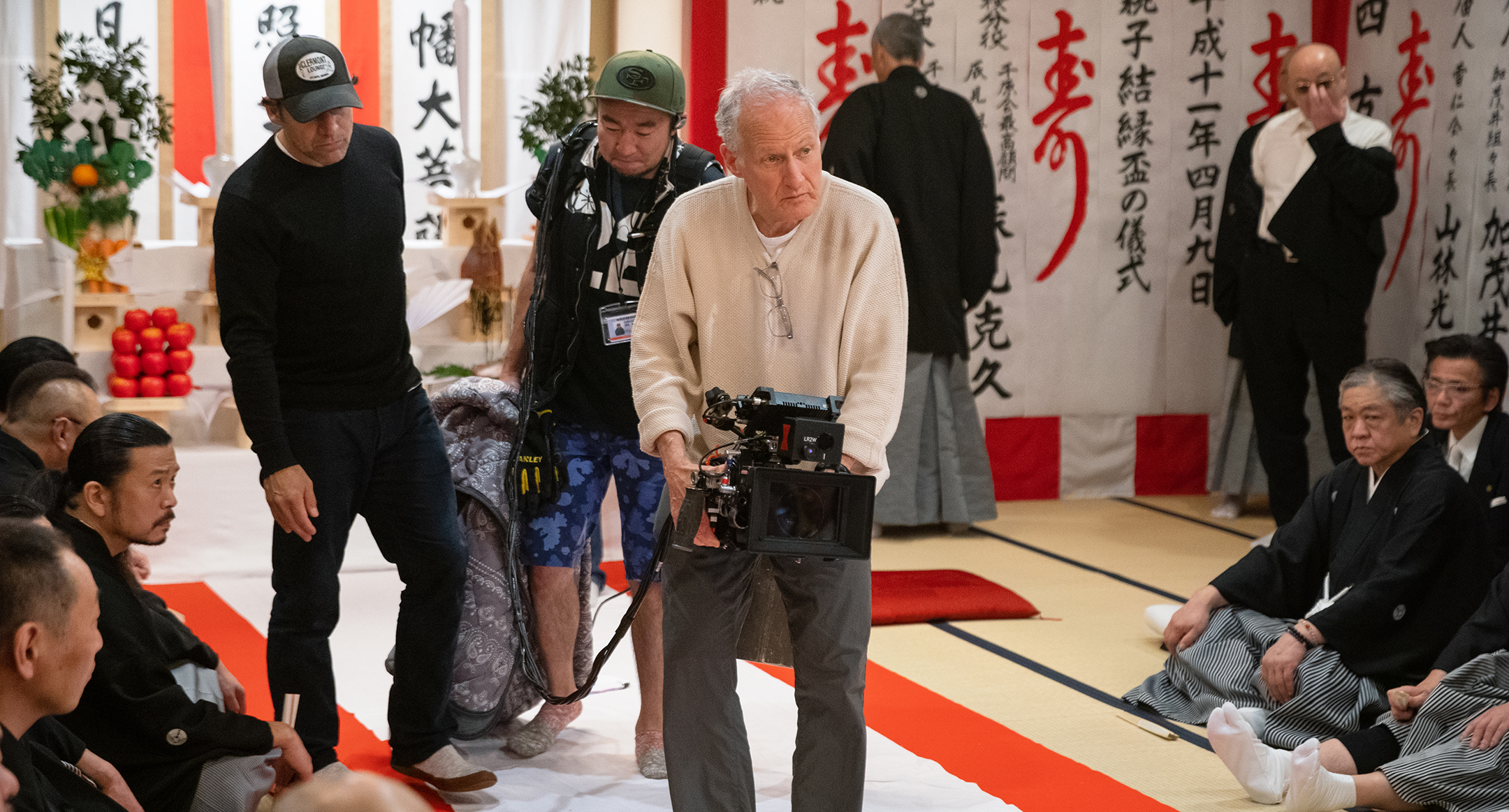
Shaping Light for Tokyo Vice
Director Michael Mann on seeking sculptural illumination for his latest contemporary crime story, set in the sprawling megalopolis.
The HBO Max series Tokyo Vice is based on the 2009 book of the same name by Jake Adelstein, which tracks a rookie American reporter (played by Ansel Elgort) as he is guided through his Japanese underworld beat by a veteran police detective (Ken Watanabe).
American Cinematographer recently spoke to series executive producer and director Michael Mann — whose stylish features Thief, Manhunter, Heat, Collateral and Miami Vice helped bring the crime genre into the modern era — about his and cinematographer John Grillo’s visual approach to shooting the show’s pilot.
American Cinematographer: In crafting the look for the pilot in prep, you shot a lot of photos on location and showed them to Grillo. The Tokyo you presented wasn’t the neon-drenched city we often seen on the screen, but a gray, brown, somewhat neutral landscape.
Michael Mann: That’s the real Tokyo; it’s real life in Tokyo. I’d been in there five, six times before for press junkets or as a tourist and didn’t even scratch the surface of the Tokyo that’s really there. The one you come to know just a little bit when you’re actually living there, and you’re going to shoot there, doing the kind of deep dive that we tend to do. It’s a real human space.
The biggest thing for me with all the photo references was to light — not to illuminate — but to really light, to shape light. Quite specifically, use light to model and make sculptural physical objects, like human faces. It’s a very designed approach that only people who light can do. There are other contemporary approaches to lighting that are really just to make a dull illumination, which I don’t understand at all and leaves me completely indifferent. That’s not what I wanted to do. I wanted the light to specifically shape an object and bring emotion into a moment of realization, like the shot of Jake at the window, staring at the eye.
When you and John filmed that scene — with Jake in his apartment, looking out the window at a poster of a gigantic eye — John said he knew it was going to be an iconic image of the show. How did you execute that shot?
It was interesting because the lights were these little 25-watt bulbs inside Japanese paper lanterns that we were using with a little bit of top light. The design was to have pools of light and shadow — you see what you needed to see. John accomplished that; it’s a perfect shot.
There’s a very interesting companion shot, which is Jake sitting at the window, looking at the eye from the outside. We see the street, a neighborhood called Akabane — kind of a low-rise local neighborhood in the middle of Tokyo. There’s a sense of street life and a strange sign across the street with an eye in it. It’s not a genius symbol or anything, but you get what the idea is — that the light bulb came on just for Jake.
In the pilot, your camera is kinetic, nearly always in motion. John mentioned that this was what he thought was the signature style of the show. He explained that his major objective was to allow you to move the camera quickly while also giving you the ability to re-block a scene and improvise at a moment’s notice.
That’s true. For me, I’m just looking at the end result. John’s the guy who had to get it there. But in doing that, he kind of sells himself short. Because that’s only half of it. The other half is his terrific work as a lighting cameraman. That’s critically important. We’ve known each other and worked together for a very long time and he’s just continued to evolve. I’d love to do a major project with him at some point.
He did leave one good thing out: John is a fantastic guitarist. He was born in Mexico and really knows Latinx music. When he was working [as a first AC for Dion Beebe, ASC, ACS] on Miami Vice, he was also kind of a music coordinator for me. All of the Cuban music we found and used in the film, it all came from John. So put that in the article.
You can read more about their collaboration on Tokyo Vice in our upcoming July issue that features a focus on television production. Subscribe now to get this issue.





